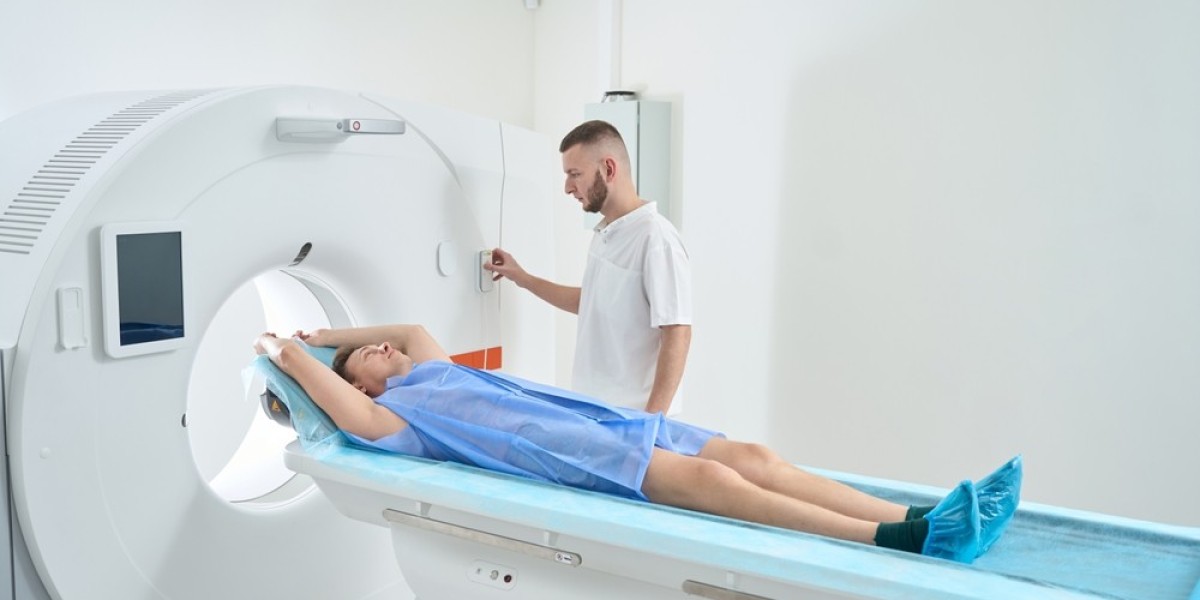Medical imaging has undergone revolutionary changes over the past few decades, significantly enhancing the capabilities of diagnostic radiology facility. These advancements have transformed the way healthcare providers diagnose, treat, and monitor various medical conditions, leading to better patient outcomes and more personalized care.
From the development of more sophisticated imaging techniques to the integration of artificial intelligence (AI), the field of medical imaging is continually evolving. This blog delves into some of the most significant innovations and breakthroughs in advanced medical imaging, highlighting how these advancements are reshaping the landscape of diagnostic radiology.
Evolution of Medical Imaging Techniques
1. Magnetic Resonance Imaging (MRI)
Magnetic Resonance Imaging (MRI) has seen considerable advancements since its inception. Traditional MRI machines were known for their lengthy scan times and limited resolution. However, recent innovations have introduced higher field strengths, such as 3T (Tesla) and even 7T MRI scanners, which offer superior image quality and faster scan times. These high-field MRI scanners provide detailed images of soft tissues, making them invaluable for neurological, musculoskeletal, and cardiovascular imaging.
2. Computed Tomography (CT) Scans
CT imaging has also made significant strides. The introduction of multi-slice CT scanners has revolutionized the field by providing high-resolution images in a fraction of the time required by older machines. Innovations like dual-energy CT and spectral imaging allow for better tissue characterization and differentiation of materials, enhancing diagnostic accuracy. These advancements have made CT scans indispensable for trauma assessment, oncology, and cardiovascular imaging.
3. Positron Emission Tomography (PET)
PET imaging, particularly when combined with CT or MRI, has become a powerful tool in oncology, neurology, and cardiology. The development of new radiotracers has improved the ability to detect and characterize various diseases at a molecular level. Innovations such as time-of-flight PET have enhanced image resolution and reduced scan times, making PET scans more accessible and efficient.
4. Ultrasound
Ultrasound technology has progressed from simple 2D images to advanced 3D and 4D imaging. Innovations such as elastography allow for the assessment of tissue stiffness, which is particularly useful in liver and breast imaging. Additionally, contrast-enhanced ultrasound provides detailed images of blood flow and tissue perfusion, expanding its applications in cardiology and oncology.
Integration of Artificial Intelligence (AI)
Artificial intelligence (AI) is revolutionizing medical imaging by improving diagnostic accuracy, reducing workload, and enhancing patient care. AI algorithms can analyze vast amounts of imaging data quickly and accurately, identifying patterns and abnormalities that may be missed by the human eye.
1. Image Analysis and Interpretation
AI-powered image analysis tools are capable of detecting subtle changes in imaging studies, aiding in the early diagnosis of conditions such as cancer, Alzheimer's disease, and cardiovascular diseases. These tools can also help in the segmentation of tissues, organs, and lesions, providing precise measurements that are crucial for treatment planning.
2. Workflow Optimization
AI is streamlining workflows in diagnostic radiology facilities. Automated image sorting, triaging, and prioritization help radiologists focus on the most critical cases first, improving overall efficiency. AI-driven scheduling and resource management systems ensure optimal utilization of imaging equipment and reduce patient wait times.
3. Predictive Analytics
Predictive analytics powered by AI can forecast disease progression and treatment outcomes based on imaging data and patient history. This capability enables personalized treatment plans and more effective monitoring of chronic conditions, ultimately improving patient care.
Advances in Imaging Hardware
1. Portable and Point-of-Care Imaging
The development of portable imaging devices has brought diagnostic capabilities to the bedside and remote locations. Handheld ultrasound devices, portable X-ray machines, and compact MRI scanners are making imaging services more accessible, particularly in underserved areas. These advancements are crucial for emergency and critical care, where timely diagnosis can significantly impact patient outcomes.
2. Hybrid Imaging Systems
Hybrid imaging systems, such as PET/CT and PET/MRI, combine the strengths of different imaging modalities into a single system. These systems provide comprehensive anatomical and functional information, enhancing diagnostic accuracy. For example, PET/CT is widely used in oncology for precise tumor localization and treatment monitoring, while PET/MRI is gaining traction in neurological and cardiovascular imaging.
3. High-Resolution and Functional Imaging
Recent advancements in high-resolution imaging technologies, such as high-definition CT and ultra-high-field MRI, offer unprecedented detail and clarity. Functional imaging techniques, such as functional MRI (fMRI) and diffusion tensor imaging (DTI), provide insights into brain activity and neural pathways, aiding in the diagnosis and treatment of neurological disorders.
Innovations in Contrast Agents and Molecular Imaging
1. Targeted Contrast Agents
The development of targeted contrast agents has improved the specificity and sensitivity of imaging studies. These agents can bind to specific molecular targets, highlighting diseased tissues or abnormalities with greater precision. This innovation is particularly beneficial in oncology, where targeted agents can differentiate between malignant and benign lesions.
2. Molecular Imaging
Molecular imaging techniques allow for the visualization of biological processes at the cellular and molecular levels. This approach is invaluable for early disease detection, monitoring treatment response, and conducting research. Techniques such as single-photon emission computed tomography (SPECT) and advanced PET imaging with novel radiotracers are at the forefront of molecular imaging.
Patient-Centric Innovations
1. Radiation Dose Reduction
Advancements in imaging technology have focused on reducing radiation exposure without compromising image quality. Techniques such as iterative reconstruction algorithms in CT imaging and dose modulation strategies have significantly lowered radiation doses. These innovations are particularly important in pediatric imaging and for patients requiring multiple follow-up scans.
2. Patient Comfort and Experience
Improving patient comfort and experience is a key focus in medical imaging. Innovations such as quieter MRI machines, open MRI designs, and faster scan times help reduce patient anxiety and discomfort. Additionally, personalized imaging protocols and virtual reality (VR) environments can make the imaging experience more pleasant for patients, especially children.
The Future of Medical Imaging
The future of medical imaging is poised for even more exciting developments. Research is ongoing in areas such as quantum imaging, which promises ultra-high resolution and sensitivity, and theranostics, which combines diagnostic and therapeutic capabilities in a single procedure. The integration of AI with imaging technologies will continue to evolve, providing more precise and personalized healthcare solutions.
Imaging Services at Ascend Imaging Center
One example of a facility embracing these advanced imaging technologies is the Ascend Imaging Center. This state-of-the-art center offers a comprehensive range of imaging services, utilizing the latest innovations in MRI, CT, PET, and ultrasound. By incorporating AI-powered tools and maintaining a patient-centric approach, the Ascend Imaging Center ensures accurate diagnoses, efficient workflows, and exceptional patient care.
Wrapping It Up
In conclusion, the innovations and breakthroughs in advanced medical imaging are transforming the landscape of diagnostic radiology. From cutting-edge imaging techniques and AI integration to patient-centered advancements, these developments are enhancing diagnostic accuracy, improving patient outcomes, and paving the way for a new era of personalized medicine. Facilities like the Ascend Imaging Center are at the forefront of this transformation, providing top-tier imaging services and setting new standards in healthcare.
As technology continues to evolve, the future of medical imaging holds immense promise. Imaging services at Ascend Imaging Center offer new possibilities for early diagnosis, targeted treatments, and improved patient care.








